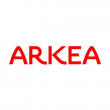NSD builds business intelligence as Moscow goes for gold
Russia’s central securities depository NSD is to get a complete business intelligence overhaul through a joint project with consultancy Optima Group. The deal should help bolster NSD as one of the key pieces in the government’s strategy to turn Moscow into an international financial centre.
Created in November, Russia’s NSD is part of the Moscow Exchange, which is currently planning its IPO on its own bourse. The plan is to build a system that will make it easier for the NSD to conduct business analysis, including tools for monitoring indicators via mobile devices.
The project is based on the QlikView business discovery platform. It includes NSD’s methodology of straight-through evaluation of key performance indicators to see what influenced them. The NSD is currently transforming the pilot version of the business intelligence system into an industrial version.
The establishment of a CSD in Russia was a vital step towards luring international investors, who had previously faced complicated, expensive and inefficient settlement in the country. US investors in particular had been hamstrung by the lack of a CSD, because US Securities and Exchange Commission rule 17F7 requires US investors to place assets with a depository. In December, NSD received further support when the Russian Federal Markets Service agreed to provide information regarding Russian issuers and securities issues to the depository.
“Receipt of timely, versatile and credible information is a base for managerial decisions,” said Eddie Astanin, chairman of the executive board at NSD. “We pay great attention to this matter.”
As part of the country’s ongoing capital markets reforms, Russia also plans to switch its securities markets to T+2 settlement later this year. At present, Moscow operates a T+0 settlement cycle, which means that trades settle immediately at the point of the transaction. This system is a major obstacle to many foreign investors, because the seller must be able to pay at the moment of the transaction. Most of Europe currently uses T+3 settlement, with the exception of Germany, which operates on a T+2 basis. But the Moscow Exchange is due to move 20 of the most liquid stocks from its MICEX order book to T+2 settlement next month, with the remainder due to follow by the end of July.












































